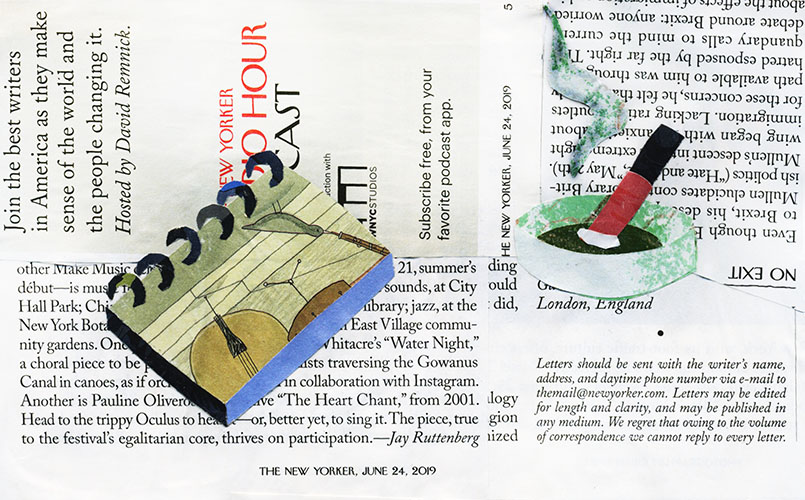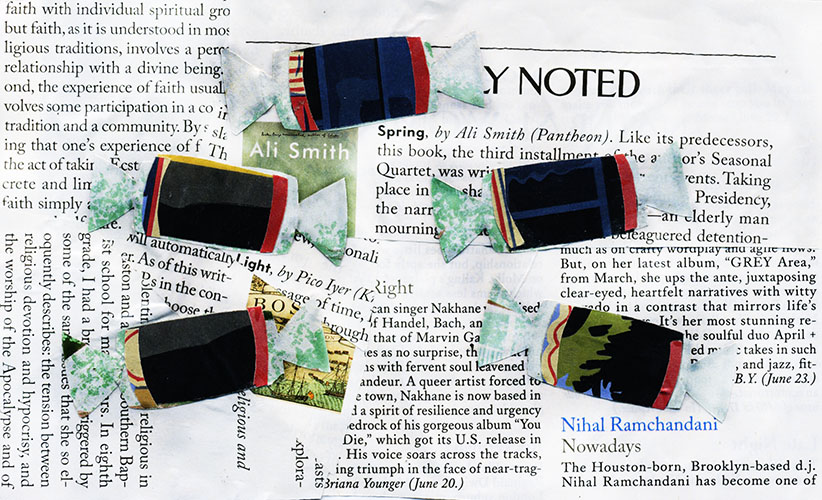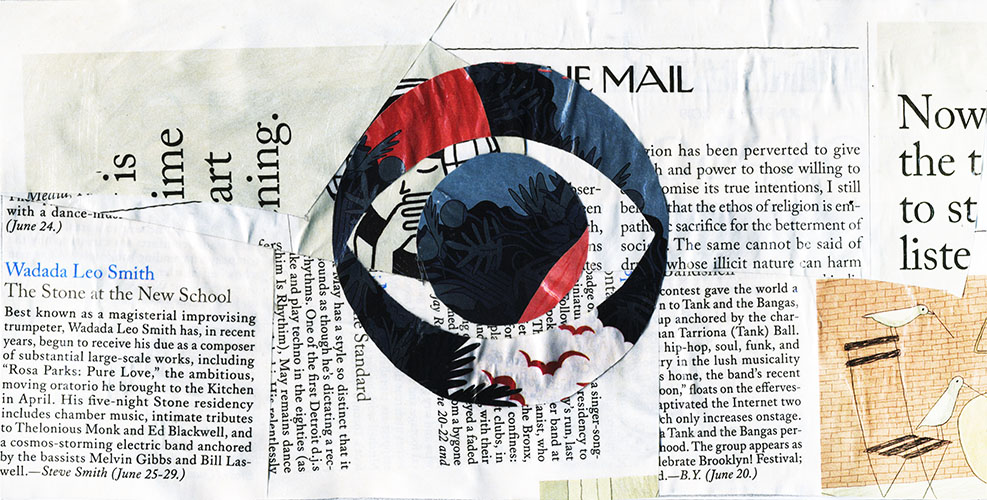In an age when the president of the United States frequently denounces hostile members of the press as “the enemy of the people,” the plight of journalists seeking to go about their work without outside interference is a frequently and worrisome topic of discussion.
Journalism today is under siege from multiple directions, whether it’s economic forces that have decimated the profession’s business models, private equity and hedge fund owners stripping newspapers and websites down for parts, or a president calling journalists “the enemy of the people.” Most recently, we’ve seen the gutting of Sports Illustrated by private owners, followed by the implosion of Deadspin, after its private-equity owners demanded that the site’s staff “stick to sports” and the entire staff resigned as a result.
But journalists’ work being curtailed or compromised by corporate or government forces is far from a phenomenon that began with the election of Donald Trump. In fact, such pressure has happened in journalism for much of the history of the profession.
For nearly that long, the movies have been telling stories about this dynamic, across many different historical eras. Over the course of 16 years, three films-Michael Mann’s The Insider , George Clooney’s Good Night, And Good Luck, and James Vanderbilt’s Truth , have told stories about journalists, at CBS News specifically, who faced different types of outside pressure that threatened their work.
While covering the same company and produced within a few years of each other, the films are set in three very different time periods and have very different treatments of how CBS journalists did battle with the powerful.
All three films were produced in the Internet age, at times when audiences had instant access to stories of the past. The Insider was made a couple of years after the events that depicted it, Good Night, and Good Luck was clearly meant to echo questions of patriotism and loyalty raised in the Bush era, and Truth came out a few years after that same Bush era. But the timelessness of all three stories indicates that these issues are at play in American culture constantly.
•
Michael Mann’s The Insider arrived in November of 1999 and marked its 20th anniversary in early November. The film, based on a Vanity Fair article called “The Man Who Knew Too Much” by Marie Brenner, told the story from the mid-1990s of Brown & Williamson tobacco scientist Jeffrey Wigand.
Wigand (played in the movie by Russell Crowe) had knowledge of significant wrongdoing by his employer, which involved their knowing that nicotine was addictive and having lied about it publicly. Wigand, however, had signed a confidentiality agreement, but nonetheless came into contact with 60 Minutes segment producer Lowell Bergman (Al Pacino) about telling his story.
Wigand’s segment is about to air when CBS’ legal counsel and president (played by Gina Gershon and Stephen Tobolowsky, respectively) inform Bergman that due to worries about legal action from Brown & Williamson, they are pulling Wigand’s interview — and that producer Don Hewitt (Philip Baker Hall) and legendary anchor Mike Wallace (Christopher Plummer) are on board with that decision. This was, Bergman discovered, in part due to worries that the controversy could jeopardize the planned sale of CBS to Westinghouse Corporation.
Amid the legal threats and lack of support from the bosses, it takes a combination of behind-the-scenes machinations and leaking by Bergman, with some help from the courts and the state attorney general in Mississippi, to ultimately get Wigand’s segment on the air, leading in part to real change: The billion-dollar tobacco settlements of the late 1990s, and the decades-long decline of cigarette smoking.
Not only is The Insider one of Mann’s most essential films, but it’s one of the greatest movies about the act of journalism, one up there with All The President’s Men. While it shows Bergman, established as a former ’60s radical, becoming jaded about his profession, The Insider also depicts Bergman as something of a journalistic superhero, going to seemingly superhuman lengths both to protect his source and to do right by him. The film also demonstrated something that a lot of people probably didn’t know until then: That on shows like 60 Minutes, it’s the segment producers — not the on-air talent — who do most of the legwork and reporting.
Between Bergman and Wigand, The Insider also offers one of cinema’s best and most realistic depictions of the relationship between a journalist and his source.
And from a filmmaking standpoint, it’s absolutely superlative. This was one of Pacino’s best performances, prior to his devolving into a caricature for the better part of a decade. Crowe also shined in a much different role from the ones he’d been playing up to that point, and Plummer seemingly disappeared into the part of the famed newsman Wallace.
The real Mike Wallace was vocal until his dying day about how much he hated the film, as he believed it unfairly depicted him as caving to corporate pressure. But the film did give Wallace an amazing dressing down moment, his “you cut the guts out of what I said!”
Like the “I hope you’ll die soon” moment in Broadcast News, the kind of speech a generation of journalists has dreamed of delivering to their soulless corporate bosses.
The Insider, in the ultra-competitive year of 1999, was nominated for seven Academy Awards, although it won none. It wasn’t much of a box office hit, but like a lot of Mann’s films, it has gained appreciation as time has passed, in part with frequent re-airings on cable. In those 20 years, it’s certainly earned its place among the greatest movies about American journalism.

•
Near the end of The Insider, Christopher Plummer’s Mike Wallace reads aloud a New York Times editorial accusing CBS News of “betraying the legacy of Edward R. Murrow.”
Six years after The Insider, but depicting an era four decades earlier, came 2005’s Good Night, And Good Luck, which depicted a large part of that legacy. That film, George Clooney’s second as director, told the story of legendary CBS correspondent Murrow, and the time in 1953 when he went toe to toe with Sen. Joseph McCarthy.
Clooney, then at the height of his movie stardom, played the small role of producer Fred Friendly. In the lead role of Murrow, he cast the respected character actor David Strathairn, and instead of giving the potentially meaty role of McCarthy to an actor, Clooney depicted him entirely via archival footage.
The film, rendered in gorgeous black and white by Clooney and cinematographer Robert Elswit, told another story of journalists going to battle with wrongdoers, without having the full support of their corporate overlords while doing so.
In Good Night, and Good Luck, it’s not only McCarthy himself seeking to discredit the journalist investigating him, Murrow, by calling him a communist. Both CBS News executive Sig Mickelson (Jeff Daniels) and boss Bill Paley (Frank Langella) warning the journalists of repercussions from CBS’s advertisers if any of them were found to have any connection to communists.
But Murrow and the CBS journalists held the line, rebutting McCarthy’s red-baiting attacks so successfully that they lead to the Senate’s eventual Army-McCarthy hearings and the senator’s downfall. However, the film ends with CBS cutting the news program’s hours, citing cost concerns.
Of course, a major change that took place in the six years between The Insider and Good Night and Good Luck was the 9/11 attacks, and the launch of the Iraq War less than two years later. These events changed the equation among politicians, the media and the public, with the Bush/Cheney administration regularly implying that members of the media who questioned the actions of the government were somehow disloyal to the country itself. This, undoubtedly, played a part in Clooney choosing to make a movie at that particular time about McCarthyism.
The film also fed into a fantasy, held by a lot of journalists, that they could take down a powerful adversary with one expertly delivered speech. Keith Olbermann, then hosting a prime time show on MSNBC, seemed to take that lesson to heart and channel Murrow in long monologues about George W. Bush’s presidency, even ending them with Murrow’s own sign-off of “Good Night, and Good Luck.”
Good Night and Good Luck was nominated for six Oscars, including Picture, Director, Original Screenplay and Actor, but won none. Time, however, has been much kinder to its reputation than it has to the film that won Best Picture that year, Crash.
•
What are the limits to rooting for journalists against the powerful interests aligned against them? One example is when the journalists get the story wrong, with horrible consequences. In 2004 journalists, also at CBS, did just that- and more than a decade later, a movie, Truth, was made that for some reason made them the heroes.
The episode took place in the fall of 2004, shortly before that year’s presidential election, when President George W. Bush (who did not serve in Vietnam) was running for president against Sen. John Kerry (who did but nevertheless was hit with a ludicrous smear campaign questioning his military heroism).
That September, CBS’s short-lived mid-week 60 Minutes spinoff, 60 Minutes II, was investigating President George W. Bush’s Vietnam-era National Guard service. The journalists uncovered some documents from the early 1970s, which appeared to be memos corroborating the theory that Bush had failed to fulfill his duty, and the show ran the story, with legendary anchor Dan Rather fronting a segment produced by Mary Mapes.
Then, some bloggers investigated the documents and determined that they weren’t genuine, and had been likely created using Microsoft Word. The story was retracted, and the ensuing investigation led to the ends of Rather and Mapes’s careers at CBS and the eventual cancellation of 60 Minutes II. Also, Bush was re-elected to a disastrous second term, and his service record was never seriously challenged by the media ever again.
It was one of the very few major incidents of that era in which the Bush/Cheney Administration actually had the moral high ground, so naturally, a movie was made about it in 2015. This was years after Bush left office, even the most conservative forces in media were no longer even bothering to defend him, and America had moved on to a new set of controversies.
Truth was adapted from Mapes’ book and starred Robert Redford as Rather and Cate Blanchett as Mapes. The film, directed by James Vanderbilt, depicted Mapes, Rather and their team as brave journalistic truth-tellers who were railroaded by corporate bosses afraid to cross the Bush Administration.
Except that . . . that’s not what happened. They got the story wrong, and in doing so hurt the credibility of themselves, their network, and the idea of uncovering the truth about Bush’s National Guard service. Rather than heroic, that’s the kind of thing that, if you’re a journalist, you should feel really bad about it! I joked at the time that Truth was like if The Insider had based its entire premise on the notion that nicotine wasn’t addictive.
If the other movies had been about heroic journalists striking back against forces seeking to not only limit them but sap them of their credibility. Truth, without even realizing it, was a movie about journalists who hurt their own credibility.
I once interviewed a professional competitive eater about his training routine, and after the story was published I looked at my notes and realized I had misstated the number of Tootsie rolls that he chewed on per day to prepare himself for competitions. And that mistake, minor as it was, kept me up at night. I can only imagine I had screwed up something with the potential to affect war, peace, or the outcome of a presidential election.
Truth did not receive any Oscar nominations, and is, deservedly, a forgotten entry in the filmographies of its participants.

•
Alan J. Pakula’s All the President’s Men, made in 1976, is probably the high-water mark for movies about American journalism, made about one of the high-water marks of journalism itself when reporters literally brought down a president. Its descendants, in the more recent era, include Tom McCarthy’s 2015 Best Picture winner Spotlight, about the Boston Globe team that exposed the Catholic Church abuse scandal in that city, and Steven Spielberg’s 2017 The Post, a spiritual prequel to All The President’s Men about the publication of The Pentagon Papers.
Other great movies, such as Billy Ray’s 2003 Shattered Glass, have found great stories in journalists behaving badly. But unlike Truth, it at least knew that its protagonist wasn’t the hero.
Today, public trust in journalism is near all-time lows. And a lot of that has to do with politicians and other public figures- and not only the president-seeking to undermine any journalism that they don’t like. But as demonstrated by another film about CBS News this year, the documentary Mike Wallace is Here, public skepticism and distrust about journalism are far from a new phenomenon.
It’s important to protect and honor journalists when they do important and groundbreaking work, and we’ve seen a lot of that type of work under great pressure in recent years, including the numerous reporters who have broken important #MeToo stories and uncovering various abuses of power by the Trump Administration.
But part of being honored as a journalist, even under extraordinary pressure, is that you have to, you know, do great journalism, and follow-through, and not make major errors. That’s a lesson that The Insider and Good Night and Good Luck realized, but Truth, certainly, did not. •




